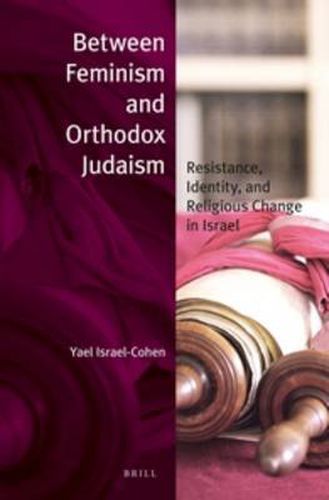Readings Newsletter
Become a Readings Member to make your shopping experience even easier.
Sign in or sign up for free!
You’re not far away from qualifying for FREE standard shipping within Australia
You’ve qualified for FREE standard shipping within Australia
The cart is loading…






In Between Feminism and Orthodox Judaism, Yael Israel-Cohen offers an analysis of the activism and identity of women considered at the forefront of the feminist challenge to Orthodoxy. Through a look at women’s battle over synagogue ritual and the ordination of women rabbis, an intricate and complex picture of identity, resistance, and religious change is revealed. Some of the central questions that Yael Israel-Cohen explores are: How do modern Orthodox women strategize to implement feminist changes? How do they deal with what at least on the surface seem to be conflicting allegiances? How do they perceive their role as agents of change and what are the ramifications of their activism for how we understand the boundaries of Orthodoxy more generally?
Between Feminism and Orthodox Judaism represents an interpretive study at its finest. It is well-written, theoretically sophisticated, and grounded within the literature. I highly recommend this book for scholars and nonscholars alike who are interested in studies of women’s resistance in conservative settings. Faezeh Bahreini, University of South Florida, Tampa
$9.00 standard shipping within Australia
FREE standard shipping within Australia for orders over $100.00
Express & International shipping calculated at checkout
In Between Feminism and Orthodox Judaism, Yael Israel-Cohen offers an analysis of the activism and identity of women considered at the forefront of the feminist challenge to Orthodoxy. Through a look at women’s battle over synagogue ritual and the ordination of women rabbis, an intricate and complex picture of identity, resistance, and religious change is revealed. Some of the central questions that Yael Israel-Cohen explores are: How do modern Orthodox women strategize to implement feminist changes? How do they deal with what at least on the surface seem to be conflicting allegiances? How do they perceive their role as agents of change and what are the ramifications of their activism for how we understand the boundaries of Orthodoxy more generally?
Between Feminism and Orthodox Judaism represents an interpretive study at its finest. It is well-written, theoretically sophisticated, and grounded within the literature. I highly recommend this book for scholars and nonscholars alike who are interested in studies of women’s resistance in conservative settings. Faezeh Bahreini, University of South Florida, Tampa